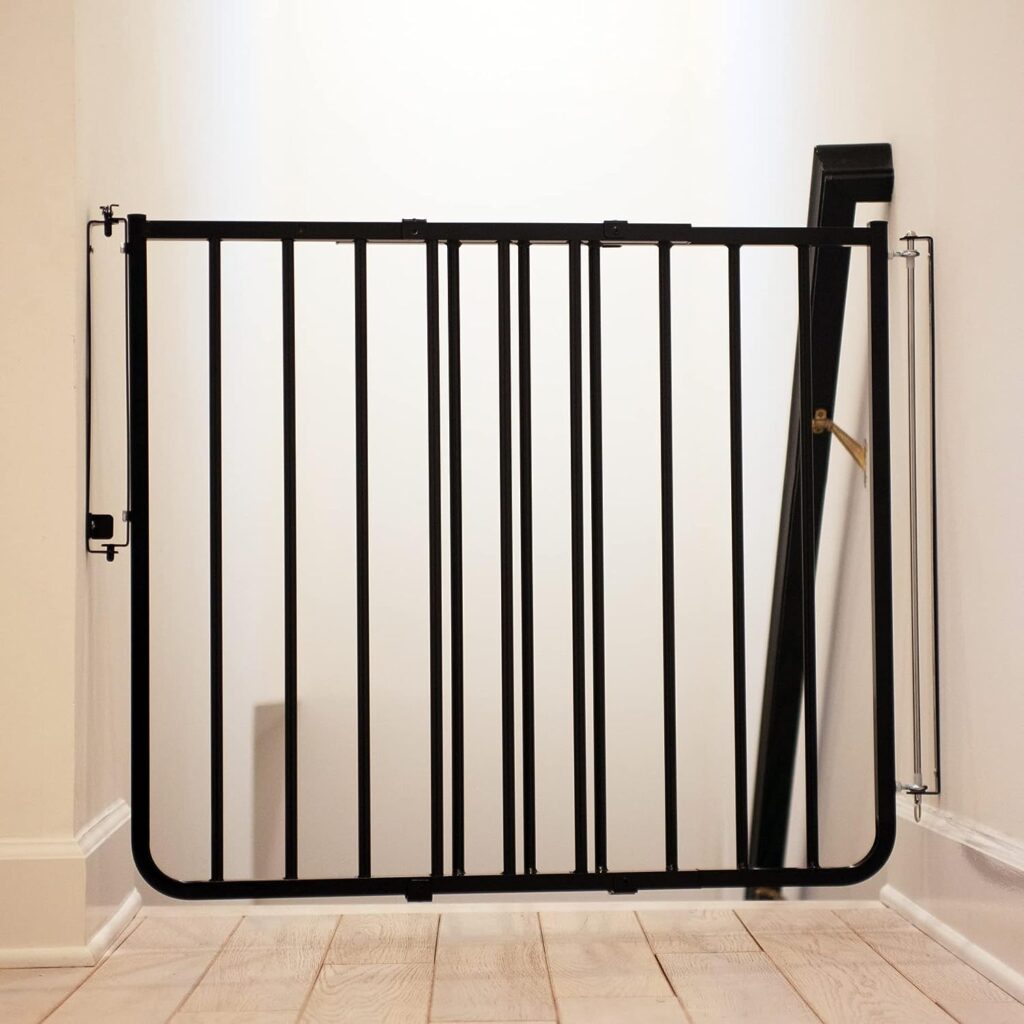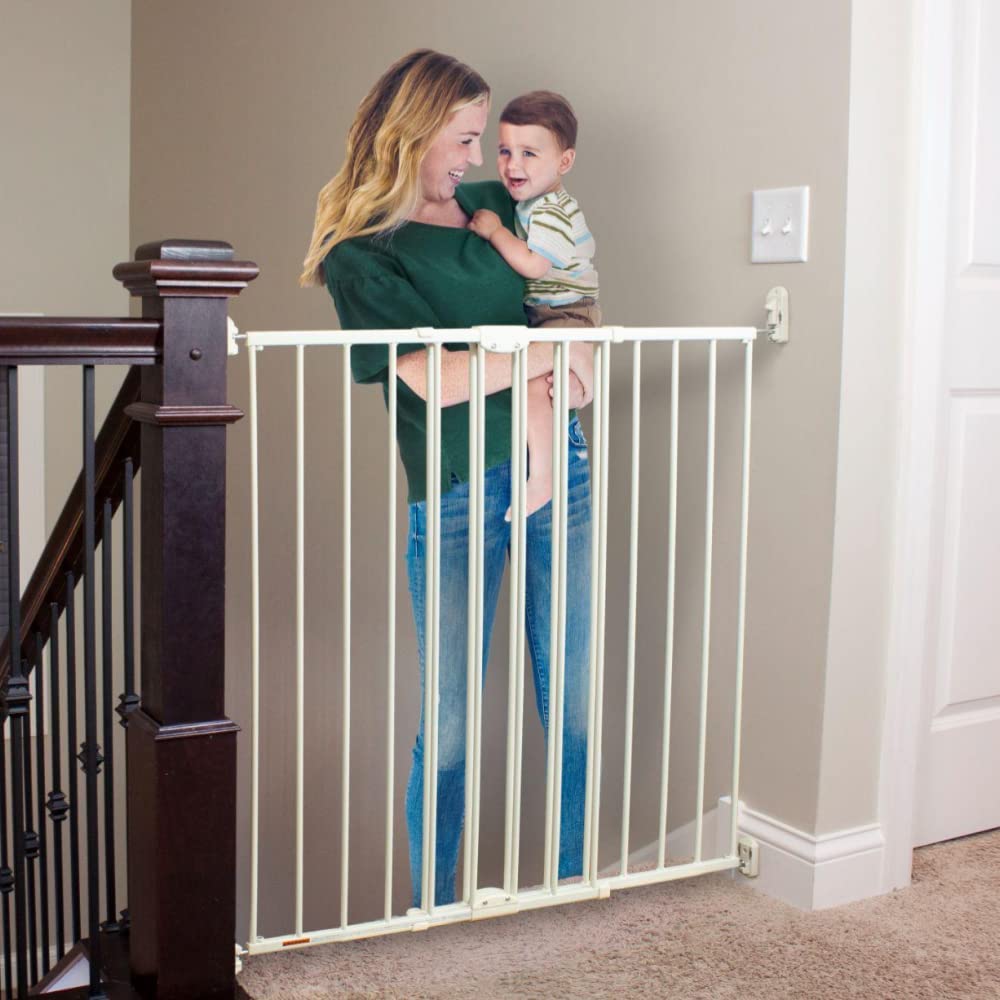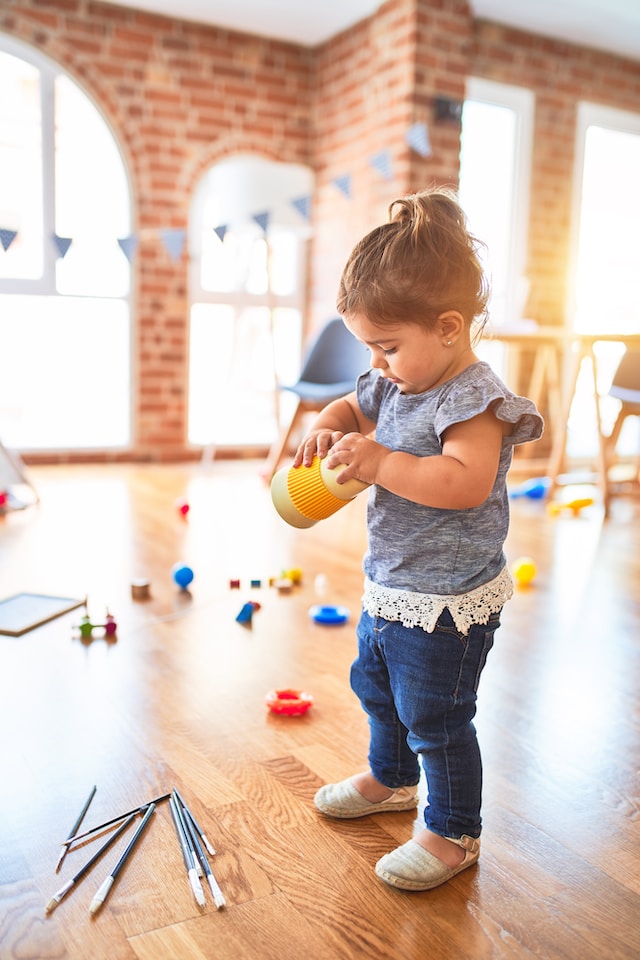When navigating the world of baby safety, sometimes it is easy to get overwhelmed with baby gate installation and usage. However, I want to make this process as easy as possible for you.
So, here are some expert tips from a veteran mom to guide you along the way.
I’ve compiled a simple list of five things ‘to do’ and five things ‘not to do’ when it comes to baby gates.
Babyproofing always pays big dividends and attention to detail is definitely worthwhile!
So let’s get started:
1. Do install only a hardware-mounted baby gate at the top of stairs
The most dangerous place in your home for a wandering baby is at the top of the stairs. To avoid a falling accident, install a baby gate that screws firmly into the wall or wood trim at the top step. Make sure that you use long enough screws so that it is firmly anchored into the studs. It does take a few minutes to install these type of gates correctly, but once secured, should not come loose. As a precaution, periodically double-check that the screws are holding properly.
For more ideas, check out my guide to the best baby gates for stairs (top and bottom).
2. Do include a gate at the bottom of stairs, as well
Second to the gate at the top of the stairway is the one at the other end. If you have a little one that has learned how to crawl upstairs, it is equally important to guard the bottom. Crawlers and toddlers especially are drawn to stairs as they are learning to navigate the world around them. But, if allowed to climb upward without direct supervision, there is just too much chance that they will tumble back down. Avoid this danger by using an appropriate baby gate.
3. Do measure your openings carefully
Nothing is more frustrating than trying to install a baby gate that does not fit the size of opening that you have. You’ve heard the old adage: Measure twice, cut once. Well, in this scenario…measure twice, purchase once. Some gates are adjustable and can cover multiple size openings, or have attachments to make them longer. Others, like a retractable gate, are designed to accommodate especially narrow spaces. Just making sure that your gate will fit is the key to a less frustrating installation process, so keep your tape measure handy!
4. Do consider your gate selection wisely
There are so many different types of gates available that it can quickly become overwhelming! What to choose? Where to put what? What features do you need? What features do you want? First, start by making a list of what is most important to you in a gate. Consider safety features, ease of use, size (including height and width), type of material, and method of install. Once you have the basic idea of what kind of gate you are needing, read reviews carefully. What gates have worked successfully for other parents who have gone before? Which ones are notorious for failing or being difficult? Consider the price point of the gates that most interest you and always buy the best one that you can afford. This is no time to skimp on quality.
5. Do keep baby gates closed and latched
Yes, it can be inconvenient to always have to unlatch and latch, open and close. But there really is no point to having baby gates in position if they aren’t used consistently. From my experience as a mom, it is best to begin using baby gates before baby is trying to leave the space. If they learn from an early age what that boundary is, they will not resist it quite so strongly. They will come to expect that they must stay within the gated area. This will make your job a lot easier in the long run, but only if you always keep the gate shut. Teach older siblings and other people in the household that they absolutely must close the gate behind them. Consider investing in easy-to-open gates with one-handed latches or walk-thru doors, as these type of gates are far more likely to be used correctly.
1. Don’t select pressure-mounted baby gates for the top of stairs
One of the most common errors, when it comes to baby-gating, is to quickly push a pressure-mount gate into position at the top of a stairway. Even if the fit seems very tight, this is an unsafe practice that can leave your child vulnerable to an unexpected fall. A pressure-mounted baby gate can loosen over time or give out suddenly if someone pushes on it or runs into it. In most cases around the house, this would not result in a severe injury, but when coupled with the height of a set of stairs, this could prove to be disastrous. Only use these types of gates in other areas of the house that do not have uneven surfaces.
2. Don’t allow baby to climb over gates
Now, I’m not suggesting that the average parent would ever “allow” a baby to scale a baby-gate on purpose, but in order to avoid this situation, it is imperative to only install a gate that is practically impossible to climb. I’m talking about a gate with no “toe-holds” and instead only has vertical bars, with no cross pieces at intervals. Also, do your best to make sure that there are no chairs, stools, or other furniture that your little one can use to push over to the gate to help them climb over.
3. Don’t leave baby unattended, even if you have a baby gate
A baby gate is a great tool but is no substitute for the watchful eye of an adult. Don’t make the mistake that your child is safe by assuming that the baby gate will keep them out of trouble. Children have been known to figure out a way to go over them or open them, or even break them. Kids are also great at finding trouble even within the gated area. Use gates, but only in conjunction with proper supervision. It only makes sense.
4. Don’t use a broken or faulty gate
A latch that jiggles, a screw that is coming loose, a bar that wriggles…these are all signs that your baby gate could fail. Don’t let that happen to you. Use a quality gate and replace immediately if any part of it seems less than stable. Don’t attempt to “rig” it or alter it in any way. It can’t be made safer by DIY unless you are a professional yourself.
5. Don’t leave baby gates up too long
And finally, know when to remove your baby gates. If your child is big enough to climb over without the help of a chair/stool, stands too tall (the top bar should be higher than ¾ of the child’s height), can push or move the gate, or can unlatch it, then it is time to simply remove the gate. It is more dangerous to keep it in place if it cannot contain your toddler. This happens usually around the age of two.
So there you have it, five things you should do and five things you should not do with baby gates. Can you think of others? If so, leave them in the comment section below! And…
Happy Baby-Gating!









